Herzlich Willkommen im Blog der Forschungswerkstatt „Japanische Küche in Berlin“!
Der Trailer stellt das Konzept des Projekts vor, das im Sommersemester 2016 erstmals an der Japanologie der FU-Berlin durchgeführt wurde.
Interview with Mr. Tsuchiya from Tokyo Gohan
by Cornelia Reiher
This year’s first joint interview took place on June 28. After the course participants had gained their first interview experience in Japanese through online interviews with students from Seikei University in Tokyo, the first interview with an owner of a Japanese restaurant in Berlin took place. During the course, the students had already started working on their own projects on Japanese cuisine in Berlin and went on excursions to restaurants and the Japanese canteen at the FU. The resulting questions became the inspiration for the questions we wanted to ask Mr. Tsuchiya from Tokyo Gohan. A student had invited Mr. Tsuchiya and he had agreed to visit us in Dahlem and bring onigiri, the specialty of Tokyo Gohan.

Copyright © Cornelia Reiher 2024
As more students are participating this year than usual and the level of Japanese is very different because some are still studying in the lower semesters of the bachelor’s program, we decided that not all course participants would ask questions. Part of the group observed the interview and the interactions between interviewer and interviewee and gave feedback afterwards. When Mr. Tsuchiya arrived at the institute with a huge cooler with onigiri, everyone was quite excited. The interview went well and was very informative. After an official part where students asked questions one by one, we ate onigiri together with Mr. Tsuchiya and chatted casually. Mr. Tsuchiya also had questions for us and was happy that so many students were interested in Japan.
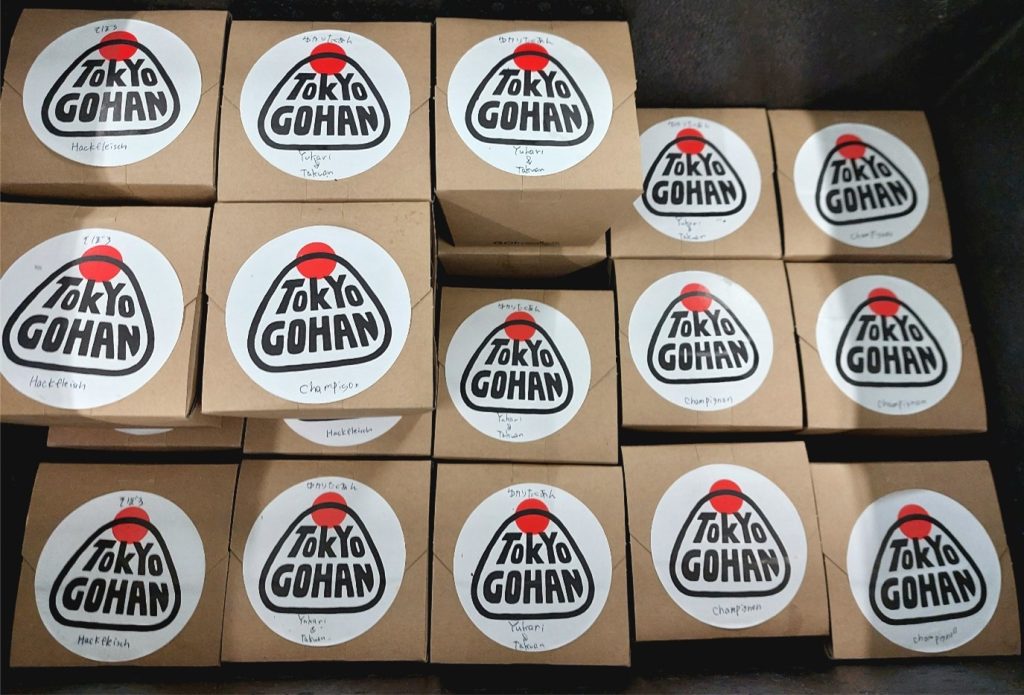
Copyright © Cornelia Reiher 2024
We learned that Mr. Tsuchiya, a 29-year-old from Tokyo, founded Tokyo Gohan in Dresden in 2021 together with a friend. In 2022, they opened a second restaurant in Berlin. Mr. Tsuchiya originally aspired to a career in soccer in Germany, but switched to the culinary world after training in an onigiri store in Tokyo. He saw a niche in the German market for onigiri and chose Dresden for its affordable rents and relaxed atmosphere. In Berlin, Tokyo Gohan offers popular flavors such as shake (salmon) and vegan onigiri and has now grown to a team of six employees. The store serves a wide customer base, from young families to older customers, and uses social media and delivery services such as Wolt and Uber Eats for its marketing. Mr. Tsuchiya uses mainly local ingredients and is constantly adapting the menu.
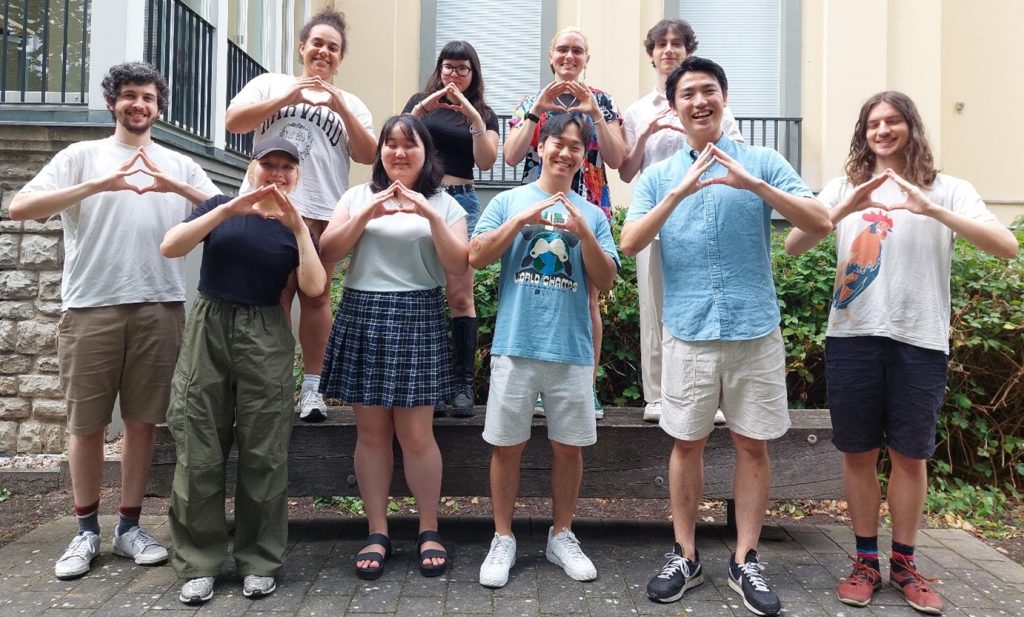
Copyright © Cornelia Reiher 2024
After the interview, we reflected together on the course of the interview and talked about possible improvements. Overall, however, students were satisfied with the interview. The next task is to transcribe a part of the interview. The interview was a wonderful opportunity to practice Japanese, learn more about the Japanese foodscape in Berlin and taste the delicious onigiri from Tokyo Gohan. Thank you, Cosmo, for inviting Mr. Tsuchiya, and thank you, Mr. Tsuchiya, for coming all the way to Freie Universität in Dahlem.
Experiences of Seikei University students with interviews by FU Berlin students
by Tadahiro Nakamura and Hinata Takemoto
In May 2024, students from Seikei University and FU Berlin met for online interviews about food culture and everyday eating practices in Japan. While the experiences of the Berlin students were summarized in the previous blog post, two students from Seikei University report on their experiences in this blog post.
Tadahiro wrote:
First of all, I would like to thank my interviewers, Sarah and Michelle, Prof. Reiher, and Prof. Kawamura for giving me such a wonderful opportunity. I was delighted to talk with German students online. It was particularly interesting to learn about the difference between westernized Japanese food and Japanese food which we enjoy in our everyday life.The interview was conducted in Japanese, so that I could relax and answer the questions. When I was asked about how we appreciate foreign cuisines in our daily life, I realized that Japanese people like to have international cuisines such as Italian, Chinese, Korean, Spanish, Thai, and so on, both outside and at home. Moreover, here in Japan, the ingredients and flavors of such international cuisines are often “Japanized” to make such dishes easier to cook and taste. Sarah told me about the time when she ate foreign food in Japan that was not the same as the authentic food, but it was tasty. I found out that the same thing happens when Japanese food is exported. The case of California rolls is typical. Throughout the interview, I realized that the world is closely intertwined with food culture. The recipes, seasonings, and preparation methods are not necessarily the same, but they keep their “originality” and are accepted in the respective country. My speculation is that globalization and its consequences such as immigration and other social trends are creating this mechanism.
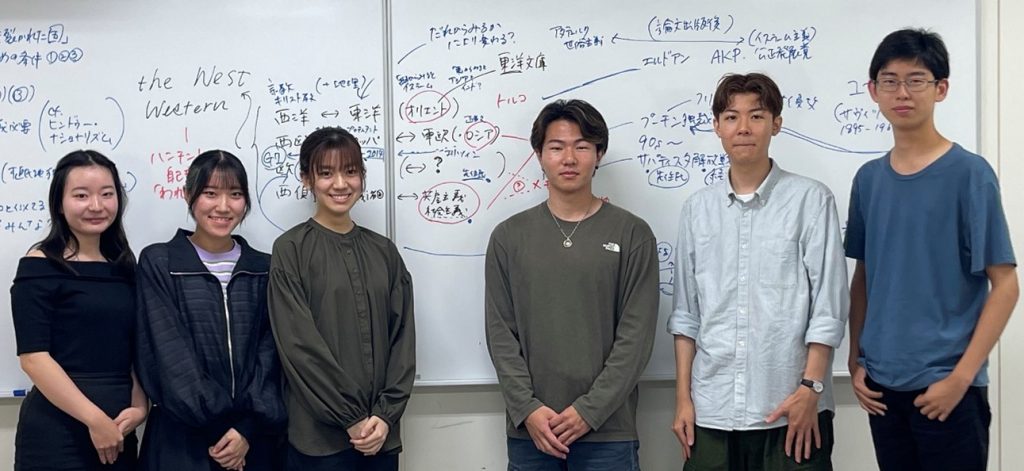
Copyright © Yoko Kawamura 2024
Hinata wrote:
I am very grateful to have taken part in this interview project. I had a valuable experience with my interviewer, Richard. It was pleasant to talk with a foreign student studying Japanese language and culture. Even when I mentioned the name of a Japanese food that is not well known to foreigners, he knew it. I was impressed by the fact that he has a strong appreciation of Japan. He was well prepared for the interview, so we were able to communicate easily. I was originally supposed to be interviewed by two students, but it turned out to be a one-to-one interview. Nevertheless, Richard and I had a great time together. He also made me happy by noticing my slight reference to Japanese anime in the interview, and we have kept in touch since the online session. From this autumn I will be studying in Scotland on an exchange program. While I am in Europe, I would like to visit Germany and meet him in person. Thank you again for this wonderful opportunity!
Our interview with students from Seikei University
by Cosmo H.
As Professor Reiher’s methods course “Berlin’s Japanese Foodscape” was open to Bachelor students this semester, we had the opportunity to participate in the annual interviews with students from Seikei University. In the interviews we talked about our interview partners’ perception of Japanese food both in- and outside Japan and various aspects of Japanese cuisine that we only had limited knowledge of. This provided us with valuable insights into their perception of Japanese food and, to an extent, how German food is perceived in Japan.
As we had discussed questions in advance, we had a general sense of direction for the interview. The interview itself went smoothly, with only minor delays in our connection with Tokyo. Previous interview experience proved beneficial, as we tried to make our interview partner feel comfortable and willing to speak freely. We doubled our initial six broad questions over the course of the interview, gaining insights into our interview partner’s daily food routines and learned how his upbringing in northern Japan shaped his perception of a traditional Japanese breakfast. As our interview partner was affected by the travel ban inflicted upon Japanese students in light of the Covid-19 pandemic right before he wanted to study abroad, we could not talk so much about how Japanese food outside Japan differs from Japanese food in Japan. But instead, we discussed about his perception of European food across different regions.
Our main takeaway for future online interviews is to always let the speaker finish their thoughts, especially in a group setting. There were multiple instances where everyone wanted to get a word in on the subject in question, resulting in somewhat awkward moments. We were fortunate to have such a cooperative interview partner, but definitely will not take this for granted and recognize our need for improvement in this area. Finally, we would like to thank both Professor Reiher and Professor Kawamura for granting us this opportunity, as well as our interview partner for agreeing to participate. This course provided us with valuable insights into research methods that we would typically only encounter later in our studies. We hope more students can benefit from such classes in the future.
* Cosmo H. is a student in FU Berlin’s Japanese Studies BA program
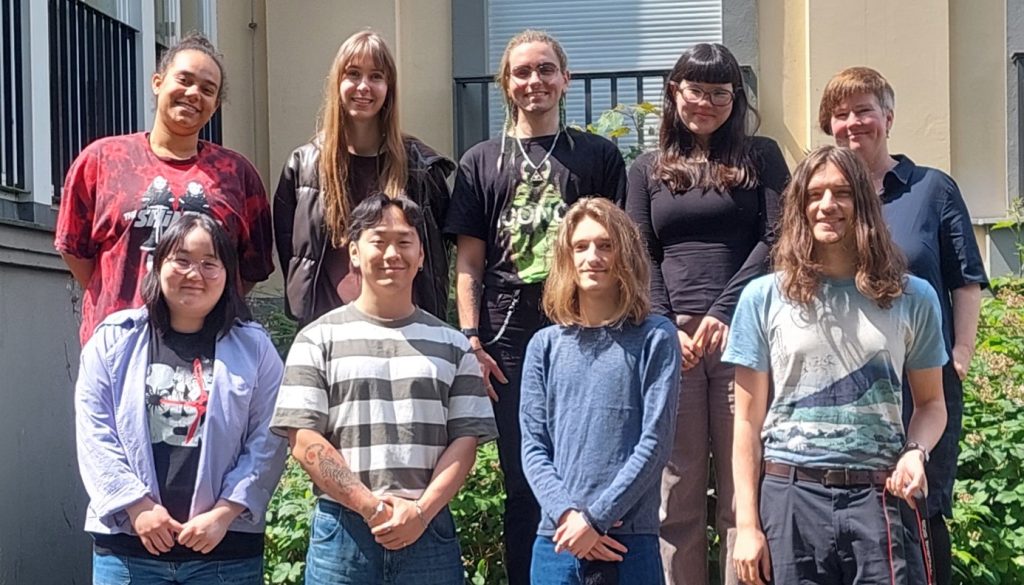
Students‘ projects about Japanese food in Berlin in 2024
by Cornelia Reiher
Time flies and a third of the summer term has passed already. This week the students are conducting interviews with students from Seikei University in Tokyo and next week they will be taking a trip to our university’s Japanese cafeteria to practice participant observation. In the meantime, students formed four groups to investigate Japanese cuisine and food in Berlin over the course of this semester. Some groups will produce videos, but the students will also try out new formats. The first project will look at the migration stories of Japanese restaurateurs in Berlin. The second project examines what kinds of food Japanese migrants living in Berlin ask their families to send to them. The focus here is on feelings of belonging and the everyday eating practices of migrants. A third project examines school meals in the Japanese school in Berlin from the perspective of parents, teachers and kitchen staff in the context of food education (shokuiku). The fourth project deals with the adaptation of Japanese recipes in Asian fusion cuisine in Berlin. The results will be available at the end of September. Until then, I look forward to many interesting interviews, excursions, interim reports on the projects and new insights into the diverse landscape of Japanese cuisine in Berlin.
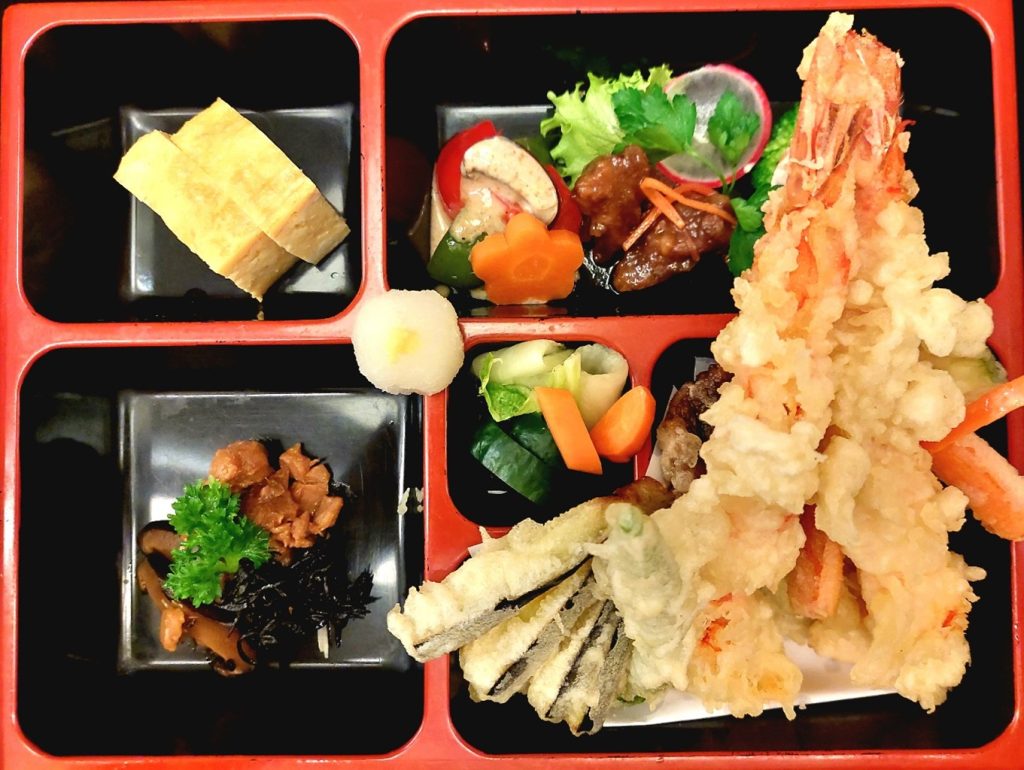
Methods Course „Berlin’s Japanese Foodscape“ 2024: Welcome to the 9th Season
by Cornelia Reiher
This summer semester, the methods course „Berlin’s Japanese Foodscapes“ will once again take place at Freie Universität Berlin. This year, BA students will also be taking part for the first time. As every year, the research workshop consists of a colorful mix of interview exercises with guests from the gastronomy, restaurant excursions and project work. This year, we are once again cooperating with Yoko Kawamura and her students from Seikei University in Tokyo to give our students the chance to experiment with the online interview format. The students will test their Japanese language skills and hopefully gain interesting insights into the eating habits of Japanese students. In the coming weeks, the students will form groups and develop their own research projects on culinary globalization and Japanese cuisine in Berlin. As always, we will document the results of the projects as well as impressions from the excursions and interview experiences on this blog. Stay tuned for updates!
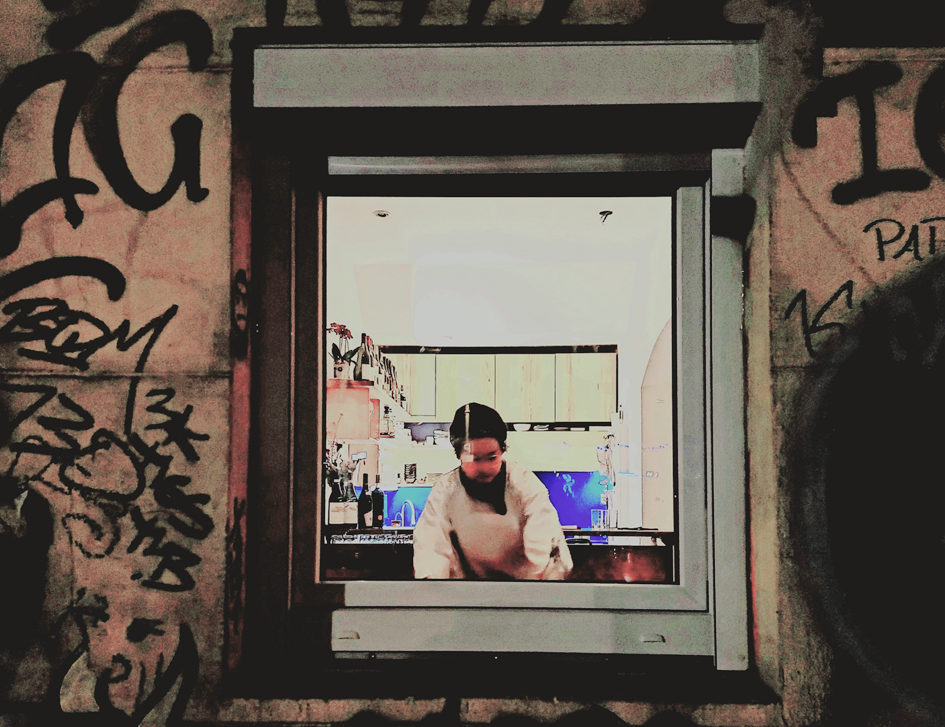
Accredited as authentic: Certifications in Berlin’s Japanese Foodscape
by Cornelia Reiher
If you want to go out for Japanese food in Berlin, you have a wide choice of different restaurants offering a variety of dishes in different price categories. It is not easy to make a decision, but there are many institutions and media offering guidance. If you want to dine at a high level, you should take a look at the Michelin Guide, which lists three Japanese restaurants in Berlin in 2023. The internet and social media also provide information and reviews on Japanese restaurants. And if you are out and about in Berlin’s Japanese foodscape, you will notice the many certificates stuck to shop windows, emblazoned on websites or framed on restaurant walls. Media and professional associations award certificates to restaurants to guide customers, but above all to distinguish them from other restaurants, and numerous organizations offer certificates. However, these are not only awarded by organizations in Germany, but Japanese institutions also award certificates to Japanese restaurants in Berlin.
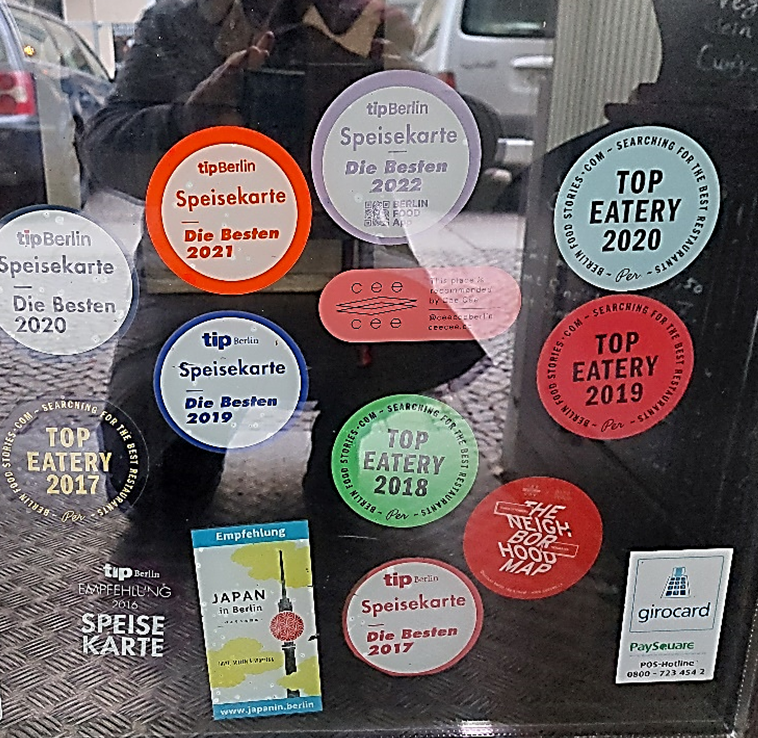
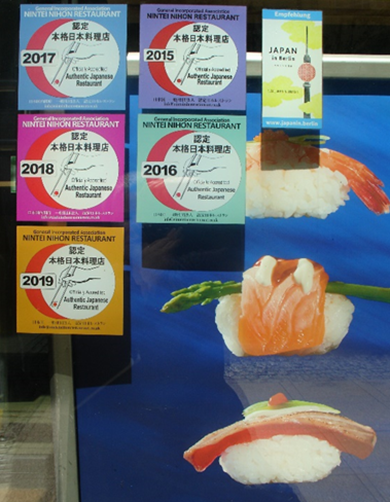
Various certificates and awards in the windows of Japanese restaurants in Berlin
Copyright © Cornelia Reiher 2021 and 2022The Japanese government’s attempt to certify authentic Japanese cuisine abroad so that Japanese business travelers don’t – heaven forbid – accidentally walk into a restaurant run by non-Japanese came under fire in 2006 and was mocked as the sushi police (Sakamoto and Allen 2011). This name was even picked up for an anime series.But other organizations are still certifying Japanese restaurants. One such certificate is the “Authentic Japanese Restaurant” (nintei honkaku nihon ryōri ten) certificate issued by an organization called Nintei Nihon Restaurant Association located in the U.K. and established by a Japanese restaurateur based in London who owns eateries in London, Germany and Tokyo. According to Farrer and Wang (2021: 24), “[m]ost, though not all awardees are Japanese-owned restaurants, including some in Paris, London, and Berlin”. Nintei Nihon Restaurant Association’s stated goal is “to recommend only the establishments serving authentic and mostly affordable Japanese cuisine outside of Japan, where you can confidently take your friends and family too for an enjoyable experience” (Nintei Nihon Restaurant Association 2024).
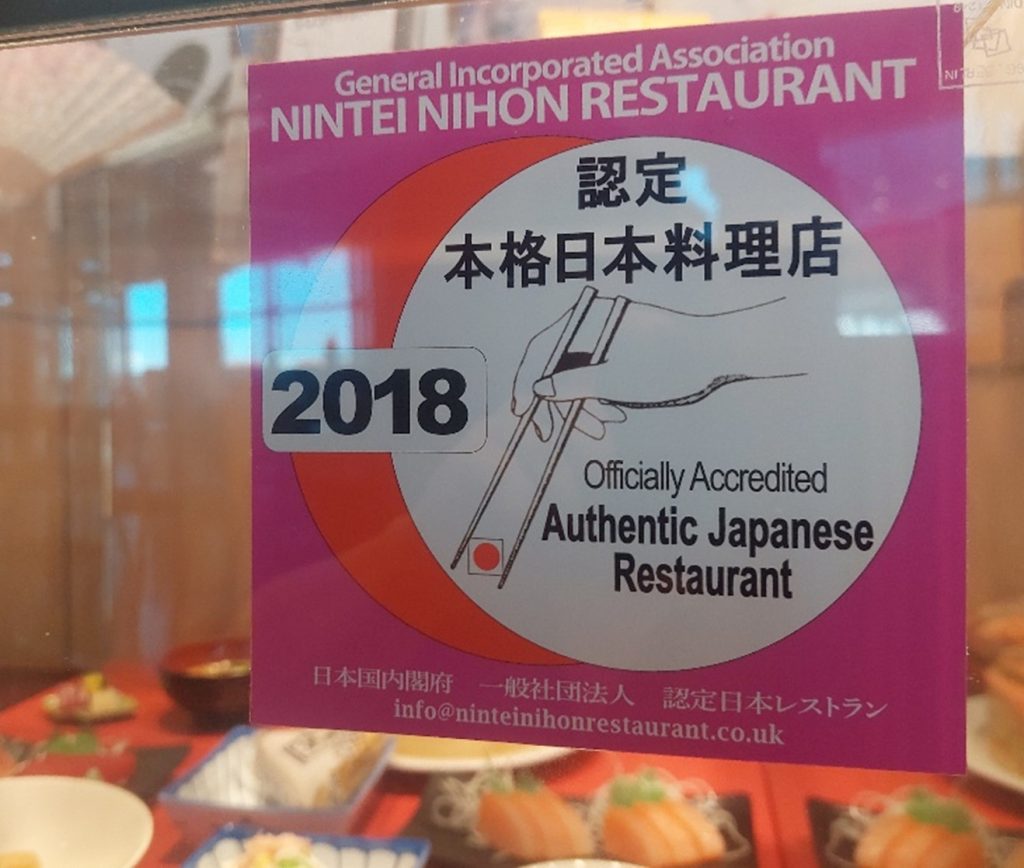
Copyright © Cornelia Reiher 2023
Since 2016, JETRO, Japan’s exchange and trade organization with offices around the world, including Berlin, has been promoting the Japanese Food Supporter Program, which was established by the Ministry of Agriculture, Forestry and Fisheries (MAFF) to foster Japanese food worldwide. Its mission is “to bring safe and delicious Japanese food and alcoholic beverages to all corners of the world“ (JETRO 2024). Until the end of January 2024, 5,503 stores and restaurants were certified as Japanese food supporters (ibid.). The certificate indicates that restaurants use Japanese ingredients. JETRO Berlin has been trying to promote the certificate for 5 years. As restaurants receive no reward other than a sticker and have to take part in time-consuming surveys about which products are used, it is not easy to convince restaurants to adopt the logo, a JETRO official told me.
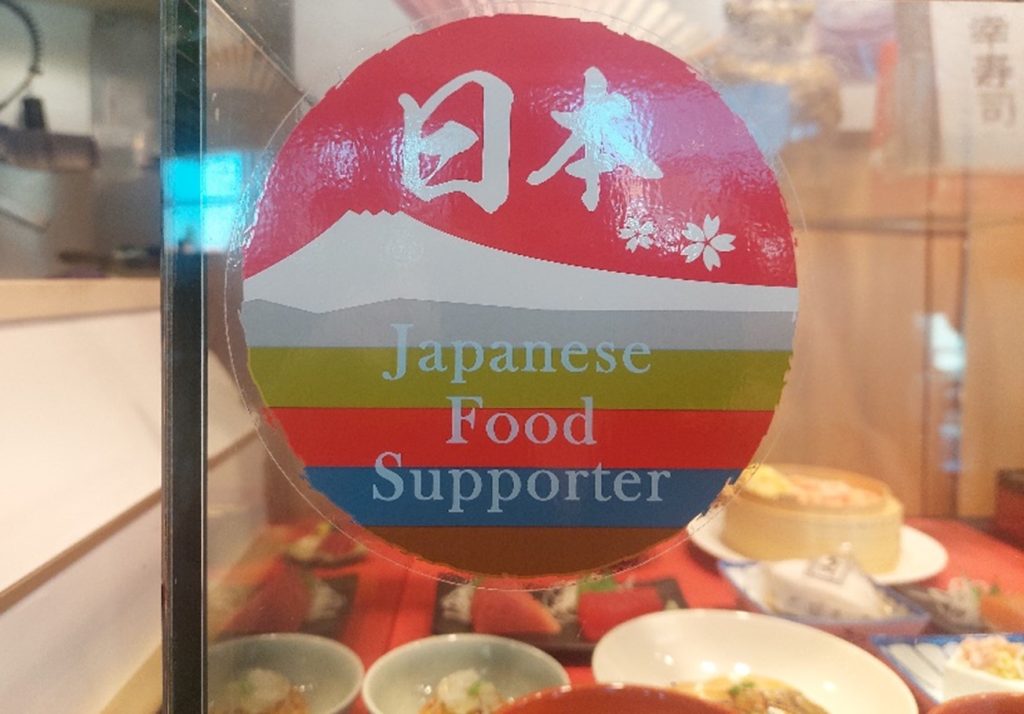
Copyright © Cornelia Reiher 2023
Another JETRO initiative to introduce Japanese restaurants to customers is a restaurant guide, which was published in 2023 and is currently being revised as new restaurants open and others listed in the current guide have already closed. Restaurants listed in the guide are selected if at least the chef or owner is Japanese. The criteria underlying the awarding of the certificates presented here and the inclusion in the restaurant guide all relate to a concept of authentic Japanese cuisine, which refers either to the involvement of Japanese people in the preparation of the food or to the origin of the ingredients from Japan. The interests behind the initiation and dissemination of such certificates are diverse and range from supporting Japanese restaurateurs to marketing Japanese agricultural products. While the restaurant guide is most likely to provide consumers with information, it remains to be seen to what extent certificates like the Japanese Food Supporter certificate or the Nintei Nihon Restaurant certificate actually provide consumers in Berlin with guidance in their search for delicious Japanese food and would need to be investigated separately.
Reference
Farrer, James and Chuanfei Wang (2021), “Who owns a cuisine? The grassroots politics of Japanese food in Europe,” Asian Anthropology, 20:1, 12-29, DOI: 10.1080/1683478X.2020.1774960.
JETRO (2024), The certification program of Japanese Food and Ingredient Supporter Stores Overseas https://www.jetro.go.jp/en/trends/foods/supporter/ (accessed February 19, 2024).
Nintei Nihon Restaurant Association (2024), “About,” http://ninteinihonrestaurant.co.uk/ (accessed February 19, 2024).
Sakamoto, Rumi and Matthew Allen (2011), “There’s something fishy about that sushi: how Japan interprets the global sushi boom,” Japan Forum, 23:1, 99-121, DOI: 10.1080/09555803.2011.580538.
Making Japanese food in Berlin: Miso and Obento
by Cornelia Reiher
As the research workshop „Japanese Cuisine in Berlin“ only takes place in the summer semester and is aimed at Master’s students, I usually offer a course on food and nutrition in Japan for BA students in the winter semester. This course mainly deals with food, agriculture and nutrition in Japan itself, but also includes texts on the globalization of Japanese cuisine. One focus of this semester’s course was on food education and regional cuisine. I therefore invited two colleagues from Japan and the USA to make miso and obento with the students.
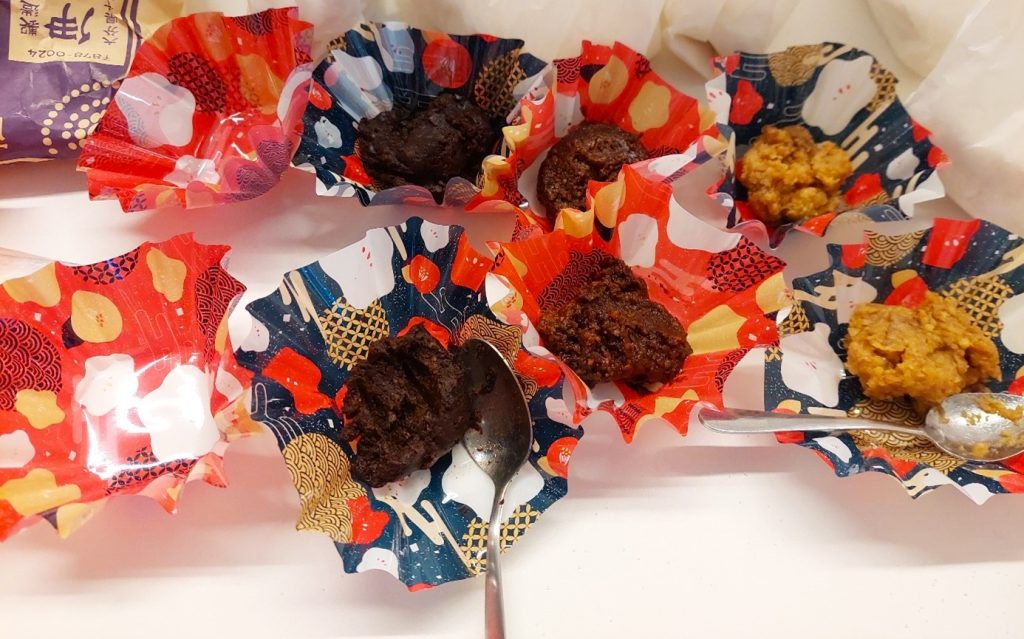
Copyright © Cornelia Reiher 2023
In December 2023, Takako Horita from Oita Prefecture visited our course. She is a nutritionist and has been working for a local government for many years. Her tasks include offering cooking classes, developing healthy eating plans for specific population groups and developing concepts for food tourism. In particular, she has dedicated herself to preserving traditional food practices and has documented, for example, the production of miso with older women in the region. They have also published a recipe book. Ms. Horita also visits schools and kindergartens to make miso together with children.
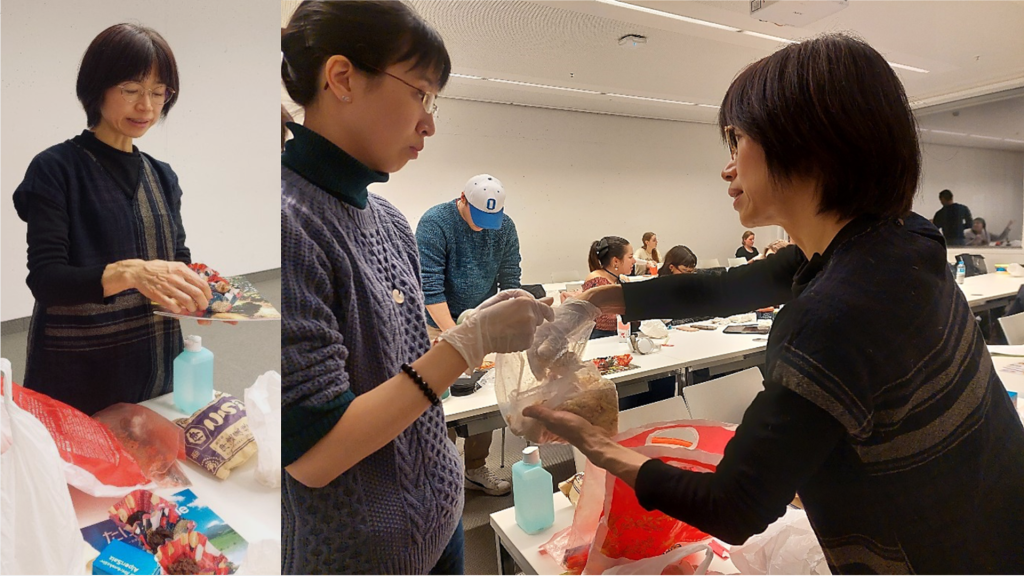
Copyright © Cornelia Reiher 2023
The culinary infrastructure for Japanese cuisine in Berlin described in my last blog post played an important role in the preparations for the workshop. Ms. Horita asked the students to soak, cook and bring soybeans before the workshop. Before giving the students this task, I visited numerous Asian and conventional supermarkets to find suitable soybeans. It turned out that, although soybeans were available, the koji kin needed to make koji or the ready-made koji itself is very expensive in Berlin. Ms. Horita therefore brought koji from Japan.
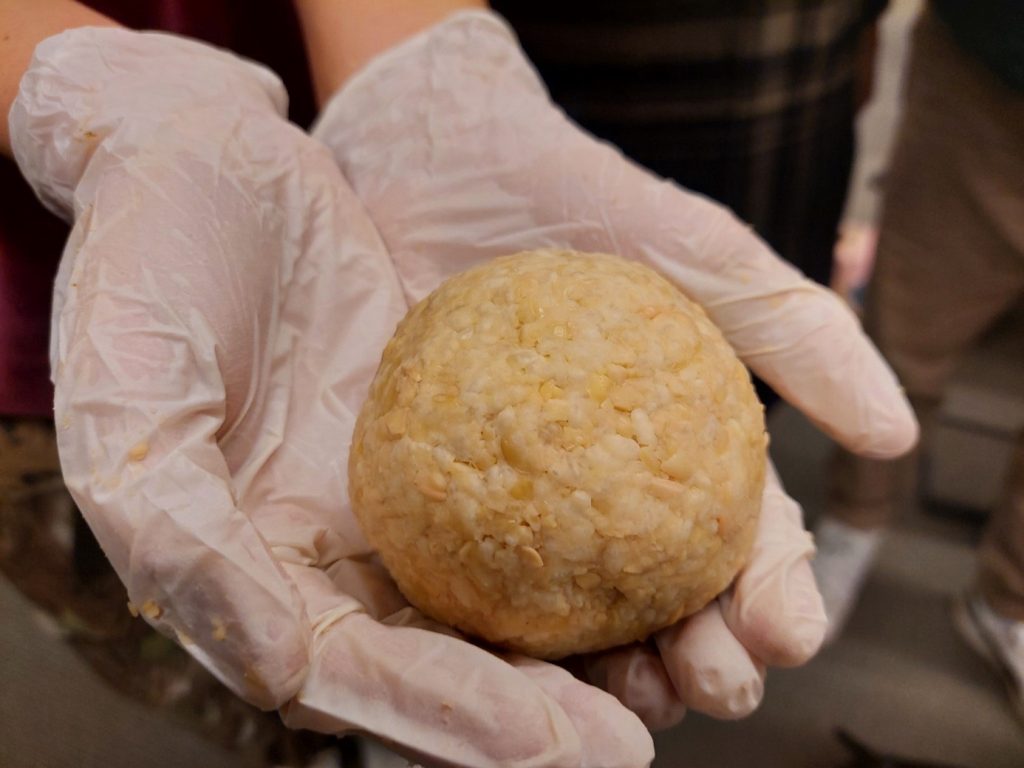
Copyright © Cornelia Reiher 2023
The workshop itself was a lot of fun for the students, even though they won’t be able to taste their own miso for a few months. After everyone had made a miso ball of a satisfactory consistency to take home, we ate miso soup together, which Ms. Horita prepared from misodama she had made herself. She had also brought miso of different ages for the students to taste.
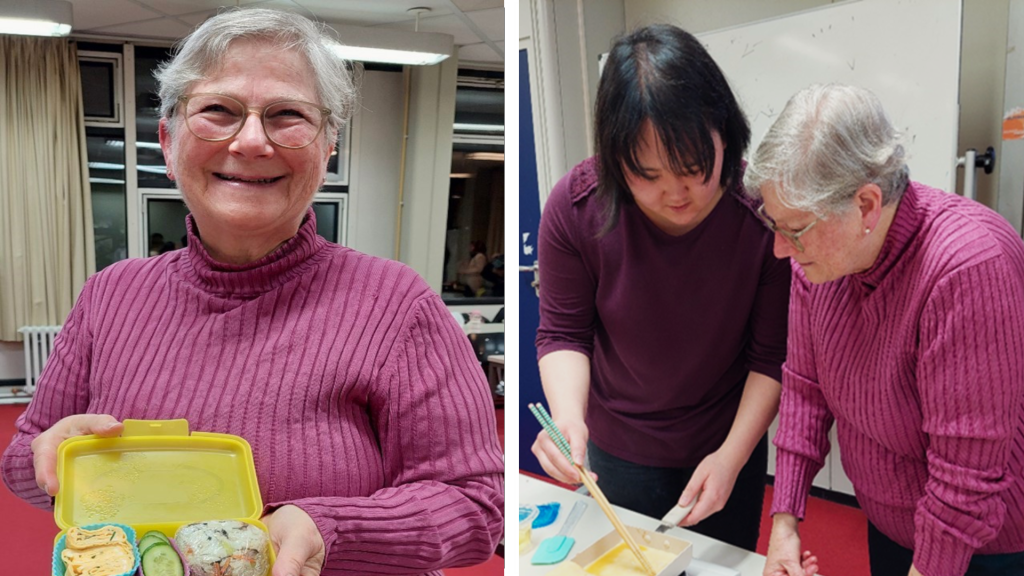
Copyright © Cornelia Reiher 2024
After ending 2023 with a miso workshop, we started the new year with an obento workshop. Debra Samuels, food journalist, cookbook author and food educator from Boston, who had already cooked with us online in the Corona Lockdown 2021, visited us at the FU Berlin to give the students insights into the world of obento and to prepare their own obento with them.
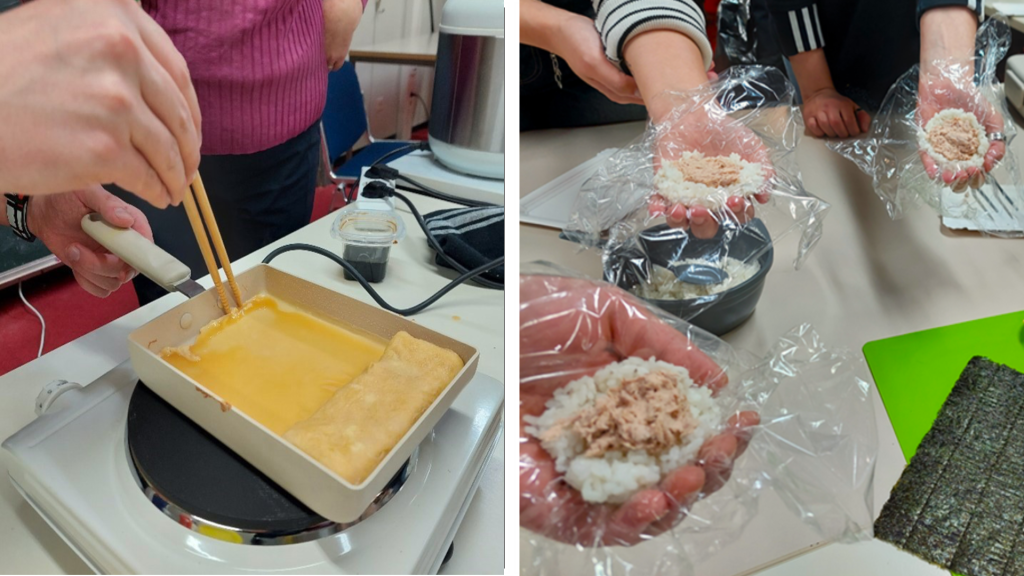
Copyright © Cornelia Reiher 2024
Since we had also talked about the connection between nutrition education and gender in the course, the topic of obento lent itself to talking about the role of mothers, their daily performance of preparing an acceptable obento and social practices of inclusion and exclusion in Japanese schools. It was insightful for the students to make their own obento. The many individual steps required to create an obento that is considered appropriate and sufficiently kawaii impressed the students greatly and helped them to better understand the burden of Japanese mothers.
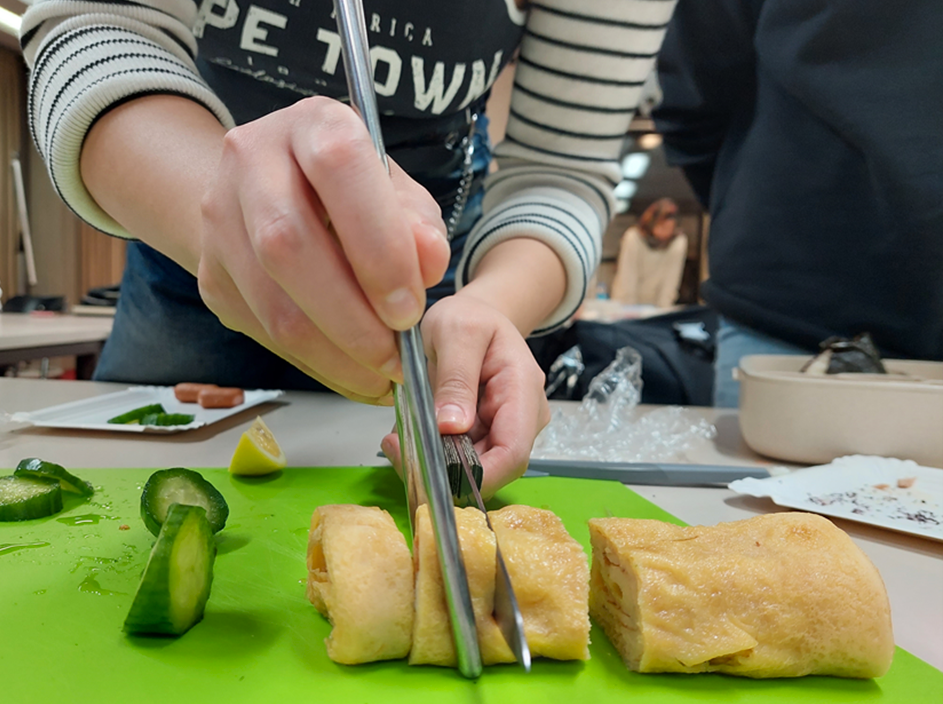
Copyright © Cornelia Reiher 2024
Debra asked the students to make onigiri, tamagoyaki, octopus sausages, tsukemono made from cucumber and a tomato heart. Despite the somewhat limited equipment in the seminar room, fabulous obento were created, all of which were different because the students had made an effort to give their obento an individual touch. Debra had bought all the ingredients in Berlin, so this workshop also showed that the culinary infrastructure in Berlin makes it possible to prepare Japanese dishes here without any problems.
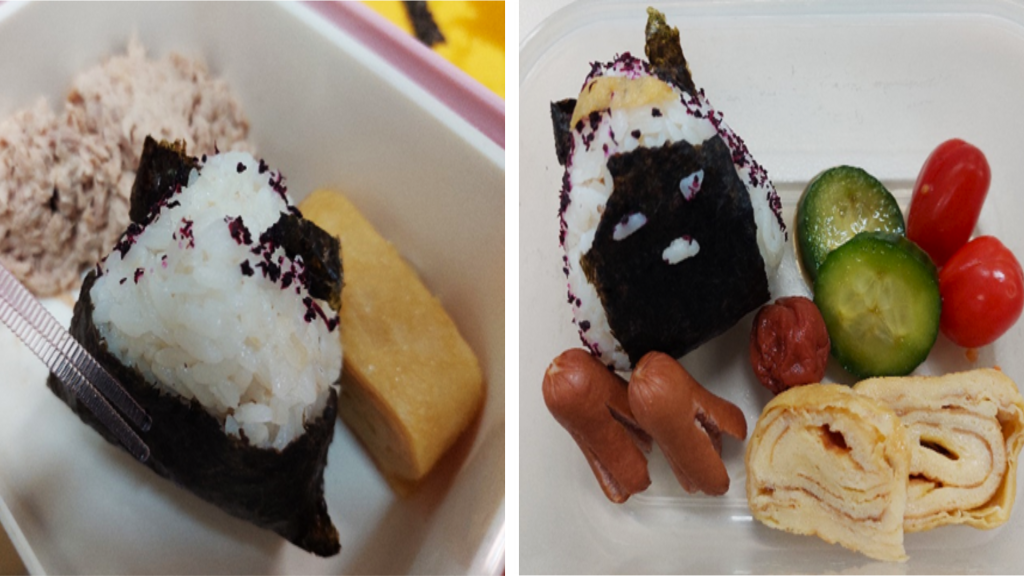
Copyright © Cornelia Reiher 2024
Both workshops were not only a welcome change from the otherwise text-based lessons, but also gave the students exciting insights into food practices in Japan and their globalization. I would like to thank Takako Horita and Debra Samuels very much for making these experiences possible.
Event: “More than Sushi: A Conversation with Debra Samuels and Cornelia Reiher about popular Japanese Cuisine in Berlin and beyond”
Join us for the Open Monday Special Edition on Food at JDZB.
Date: February 5, 2024
Time: 6 pm
Location: Japanese German Center Berlin (JDZB), Saargemünder Str. 2, 14195 Berlin
Presenters: Debra Samuels (NPO: TABLE FOR TWO USA, Content and Program Developer) and Prof. Dr. Cornelia Reiher (Freie Universität Berlin, Japanese Studies)
Link: https://jdzb.de/de/veranstaltungen/openmondayjdzb-special-food-edition

Vortrag „Kulinarische Authentizität als Emotion. Japanische Gastronom*innen in Berlin und ihre vegetarische/ vegane Kundschaft“
Vortragende: Cornelia Reiher (Freie Universität Berlin, Professorin für Japanologie)
Veranstaltung: 5. INTERNATIONALE WOCHE DER SEMIOTIK: FOOD FOR THOUGHT
Universität Potsdam
Ort: BILDUNGSFORUM Potsdam
Datum: 23.01.2024
Zeit: 10:15 – 11:15
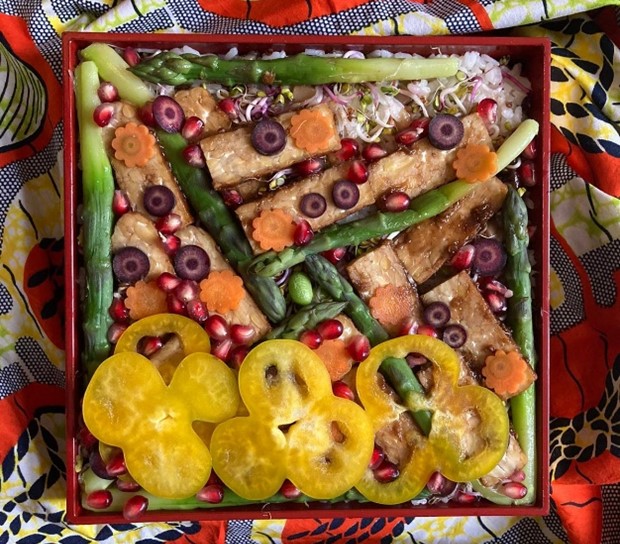

Japanese migrants in Berlin and their culinary infrastructure
by Cornelia Reiher
When I talk to Japanese migrants in Berlin, they usually say that they miss Japanese food. Although there are many Japanese restaurants in the city, it is too expensive to eat there every day. Most of my research participants only go out to eat in Japanese restaurants on special occasions. Some take sashimi and other dishes to eat at home, while others never eat at Japanese restaurants. Therefore, in this post, I introduce the everyday eating practices of Japanese migrants in Berlin and where they buy the necessary ingredients to prepare them at home. In 2018, one of our student projects investigated how Japanese exchange students use Asian supermarkets in Berlin. However, Japanese migrants who live in Berlin long-term use many other options besides Asian supermarkets to buy ingredients for Japanese cuisine on a daily basis.
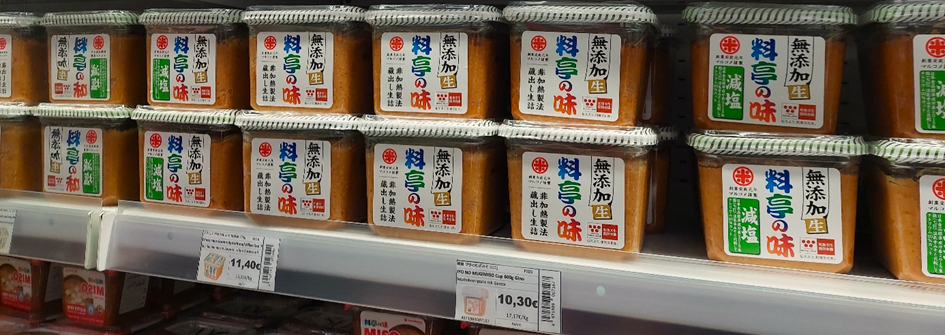
Copyright © Cornelia Reiher 2023
Most of the migrants I have interviewed over the years have told me that they cook Japanese food at home or prepare fusion dishes such as pasta with soy sauce. Some prepare rice and miso soup every day. One research participant told me that onigiri is her soul food, and when Japanese migrants get together, they bring rice-based dishes such as maki sushi. Rice came up in almost all the interviews and conversations I had, and many Japanese migrants mentioned that they bring rice home from a trip to Japan, ask their relatives to send it, or buy yumenishiki rice in Asian supermarkets, even though it is very expensive. Japanese migrants who have lived in Berlin for more than a decade emphasize that it is much easier to buy Japanese ingredients today than it was twenty years ago. The number of Asian supermarkets and online delivery services has increased. Some Japanese foods such as soy sauce or sake are now even available in normal supermarkets. A new Japanese supermarket offering products from Japan has recently opened in Berlin. It offers sake, spices, fresh vegetables and mushrooms, curry pastes, sweets, noodles and more. The supermarket even sells ready meals, just like in Japanese supermarkets, including sashimi and sushi, as well as yakitori, bentō and onigiri. The dishes are freshly prepared in a small kitchen in the store.
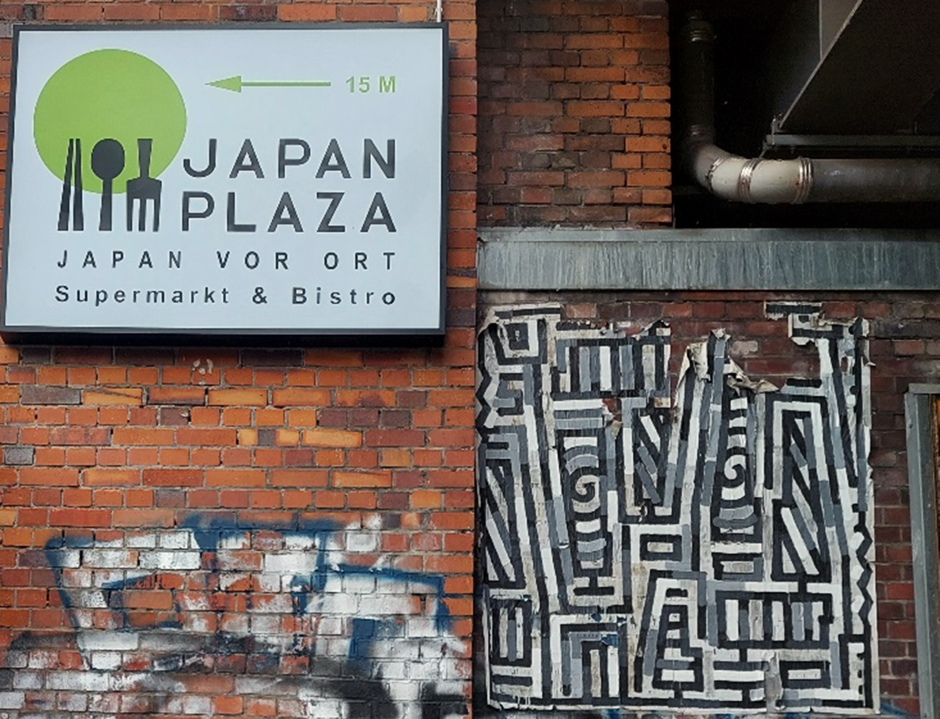
Copyright © Cornelia Reiher 2023
In addition to supermarkets, online delivery services provide the Japanese population with frozen fish and other ingredients they need to cook at home. To save some money on delivery costs and because deliveries are often made during the day when most people are at work, some migrants take turns to take orders for their friends in a group order. Sometimes companies that supply fresh ingredients to the Japanese migrant community across Europe organize pop-up events in cities with a larger Japanese community. On these occasions, many migrants come together and enjoy the opportunity to see and choose the products firsthand, meet other people and chat over a hot miso soup. These events are tailored to Japanese customers, the staff speak Japanese, and the information on the price tags is written in Japanese.
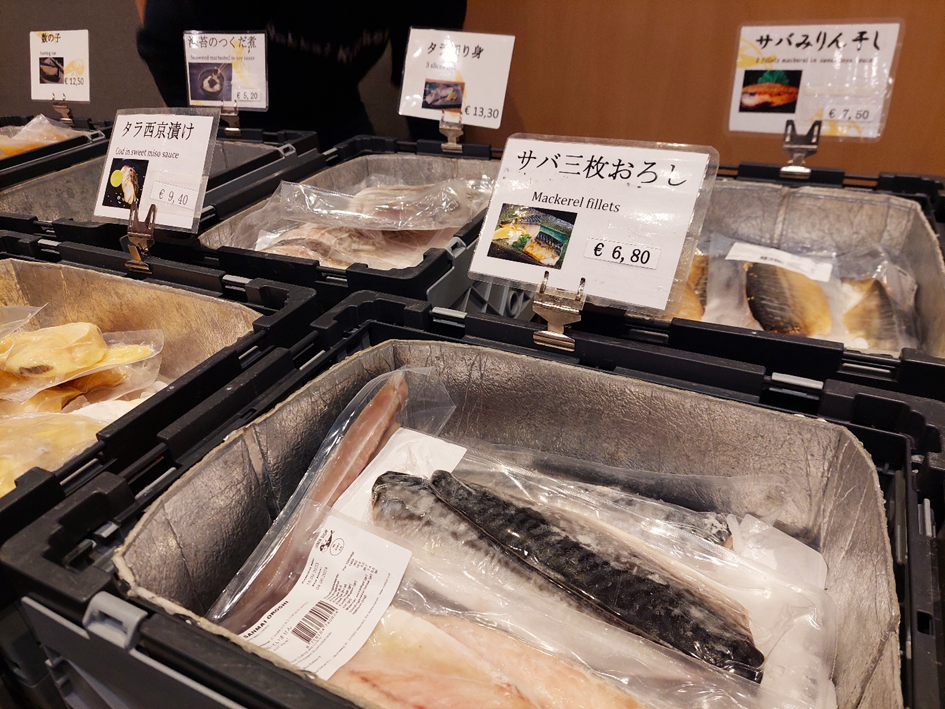
Copyright © Cornelia Reiher 2023
Overall, the growing number of places where Japanese food and ingredients can be consumed shows how a culinary infrastructure has developed with the growing Japanese diaspora in Europe. Although more Japanese ingredients are available in Berlin, most migrants emphasize that they are still expensive. Therefore, many migrants make their own miso or nattō at home because they either can’t afford to buy ready-made products or don’t want to spend so much money on them. And some simply enjoy making it themselves. Of course, this is only possible because ingredients such as kōji are now available in Berlin or can be ordered online. This brief overview of where Japanese migrants buy ingredients for home cooking in Berlin shows that the city’s Japanese foodscape consists not only of restaurants and wholesalers that supply restaurants with ingredients, but also of supermarkets and stores where Japanese migrants and the growing number of people interested in Japanese food meet their needs for preparing Japanese dishes at home.
